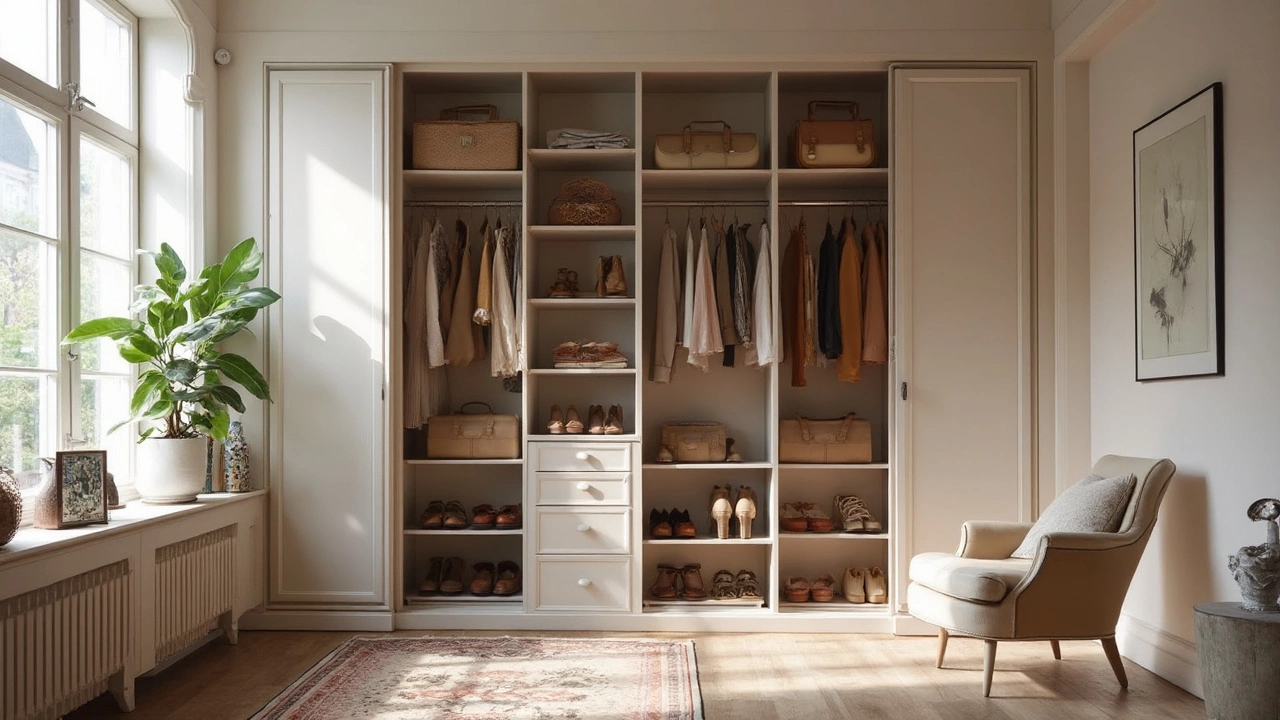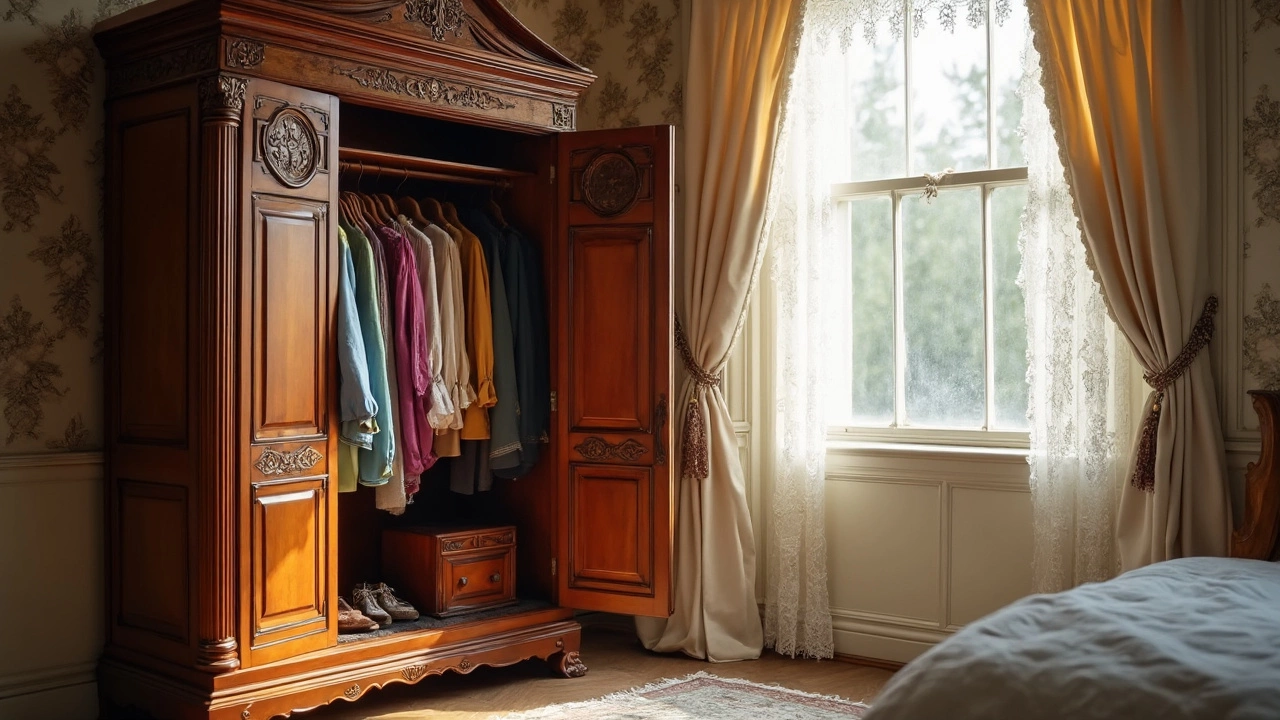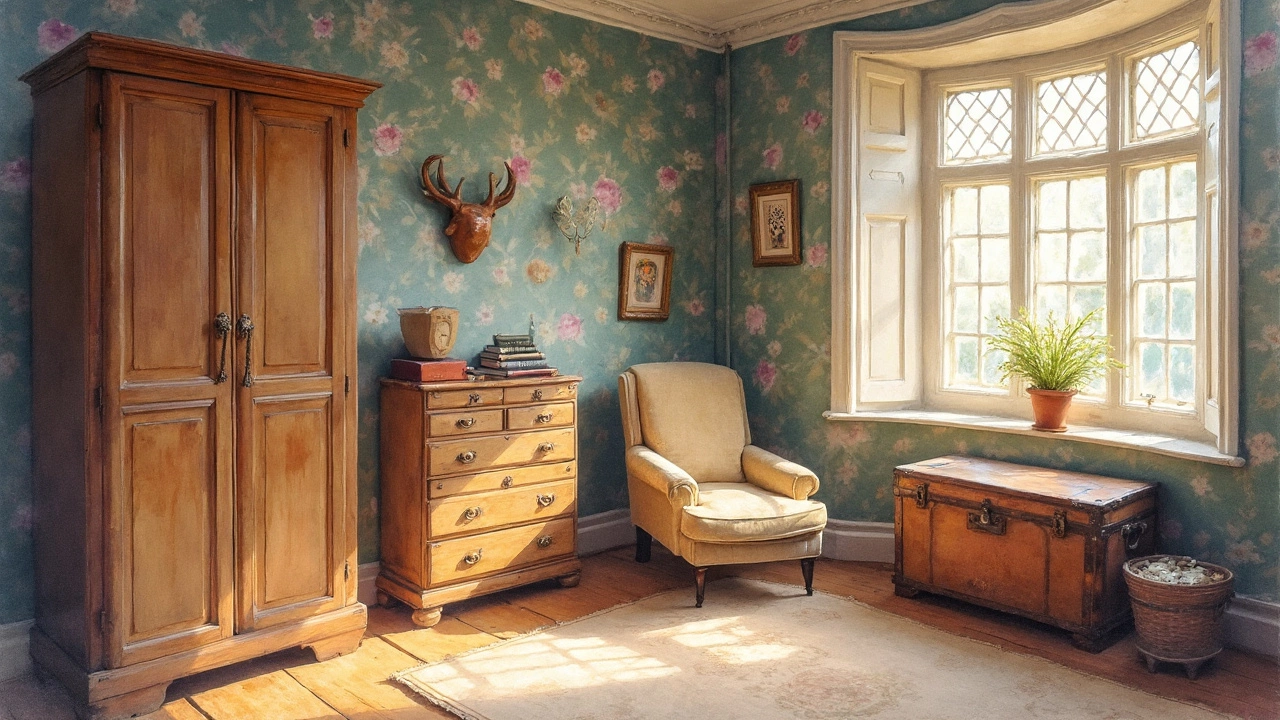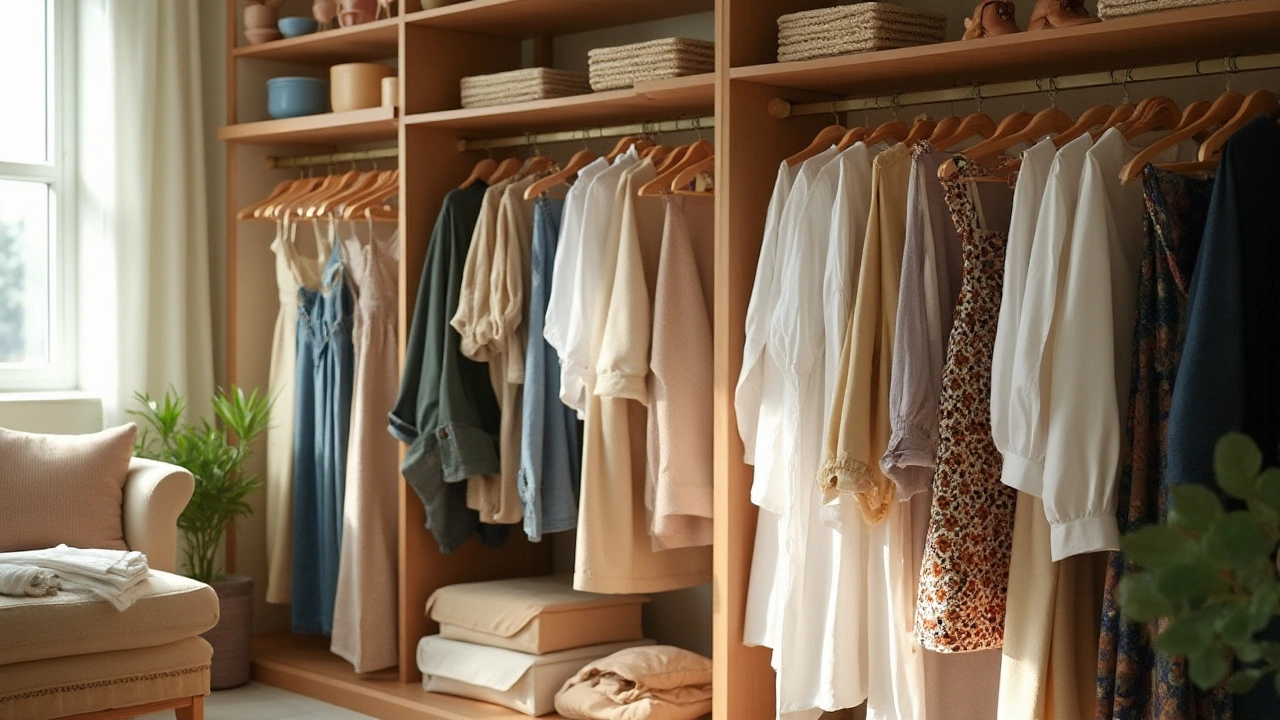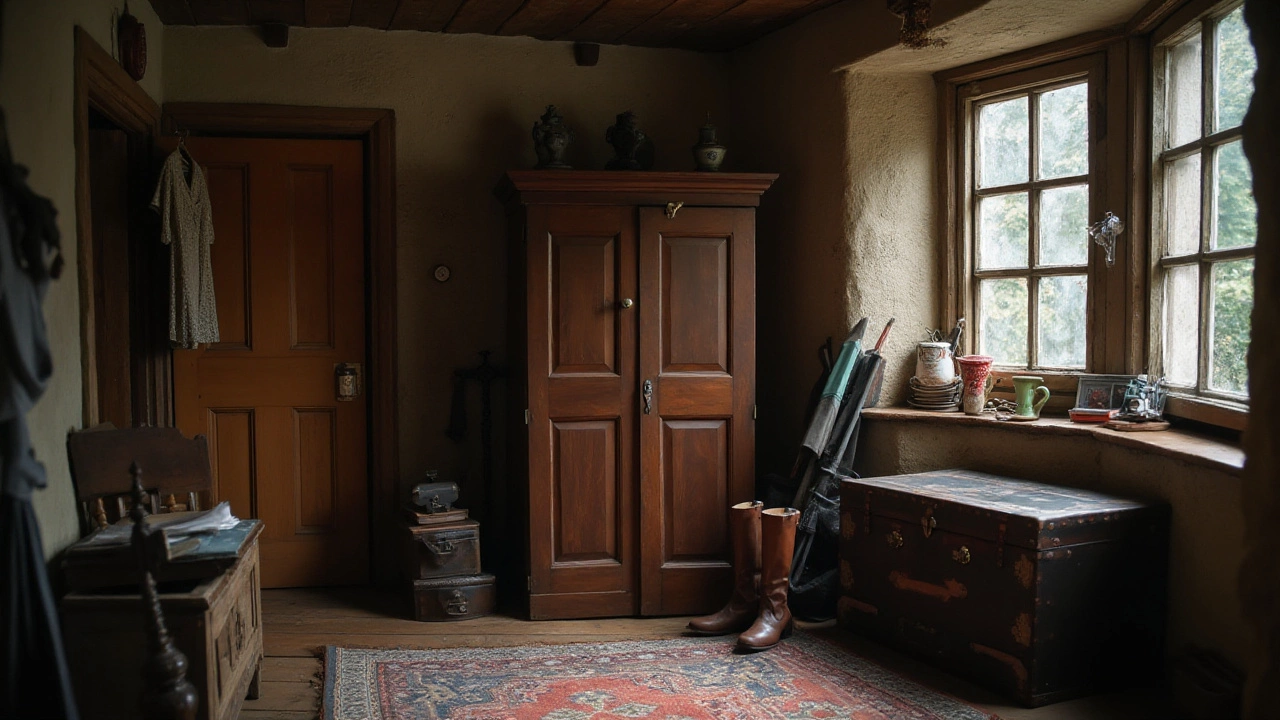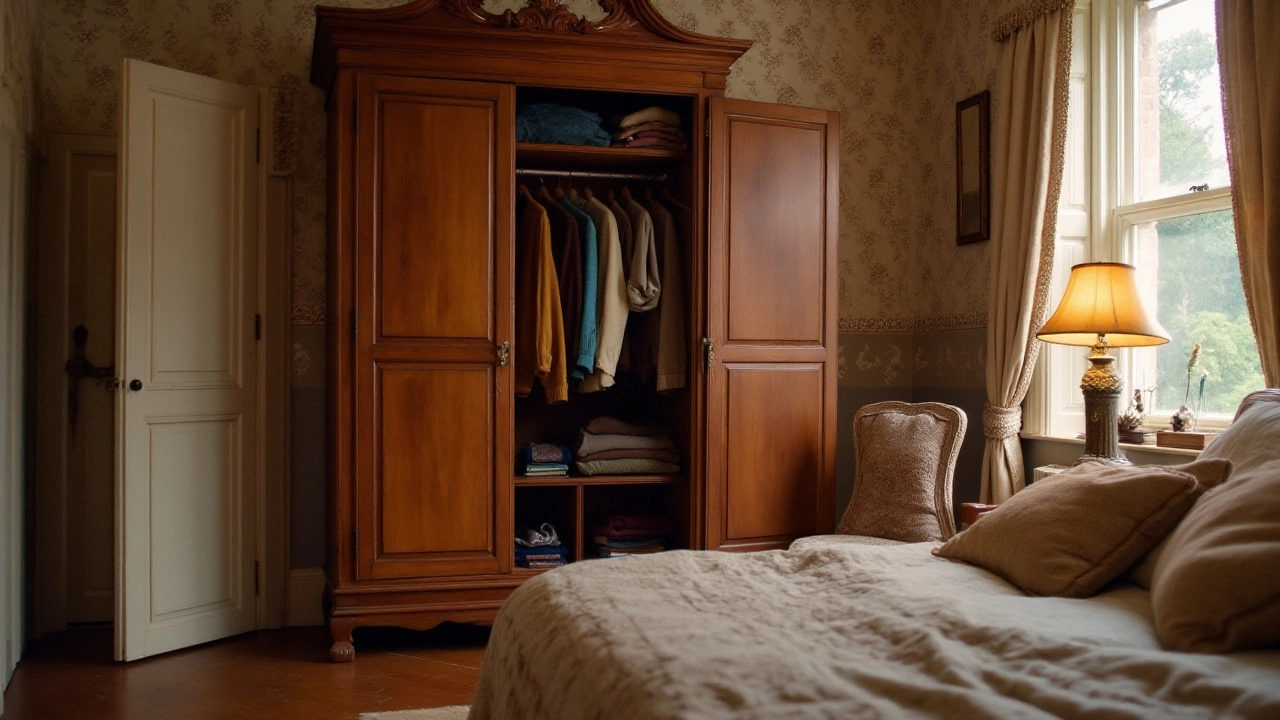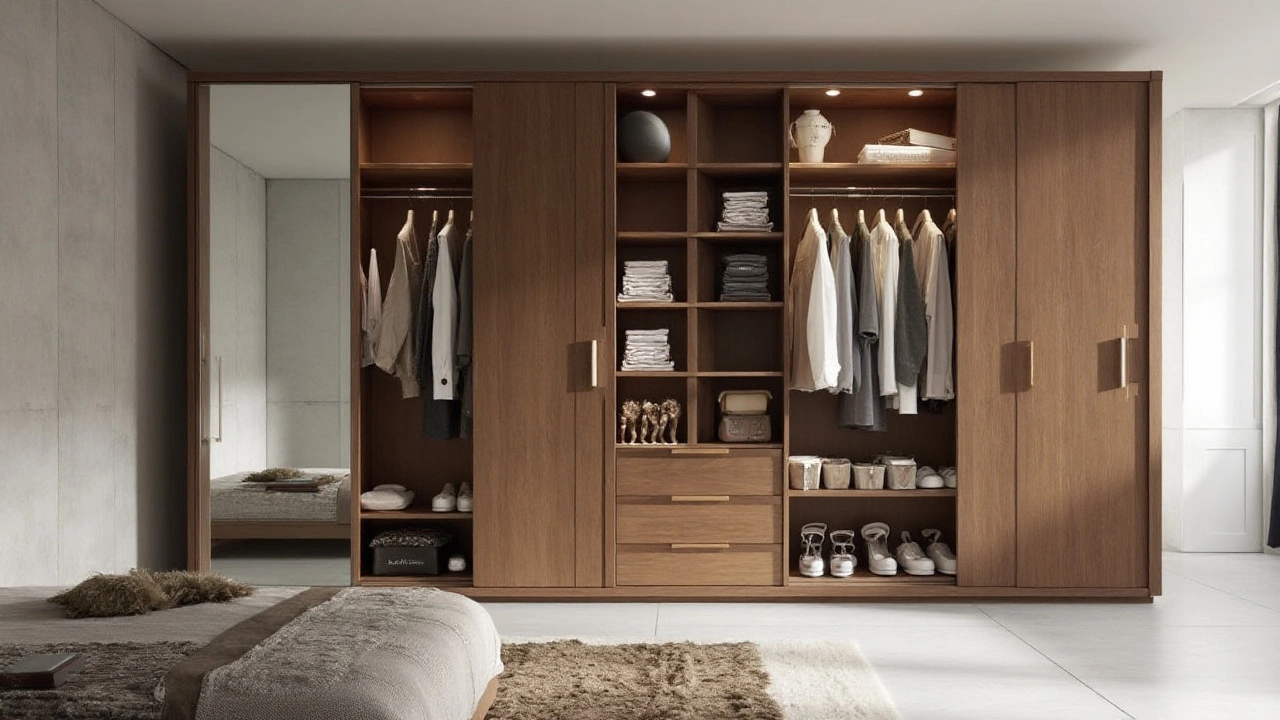Category: Wardrobes - Page 2
Unlocking Wardrobe Options Without Doors
Wardrobes without doors, often known as open closets, are gaining popularity. They offer quick access and visual inventory of clothing. These wardrobes save space and make dressing up efficient. Our article explores the charm and practicality of doorless wardrobes, providing tips on organization and aesthetics.
MoreCloset or Wardrobe: What's the American Choice?
Americans say 'closet' more often than 'wardrobe' when referring to storage spaces for clothes, though both terms exist. 'Closet' is more common in US households, typically implying a built-in space, whereas 'wardrobe' often refers to a standalone piece of furniture. Understanding these terms can help in home organization and communication. Moreover, historical influences and cultural trends shape these language differences, making it intriguing for language enthusiasts.
MoreWhy No Closets in Europe?
Have you ever wondered why European homes often lack built-in closets? This article explores the historical and cultural reasons behind this architectural quirk. Discover how Europeans cleverly use wardrobes and other storage solutions to maximize space in their homes. Learn practical tips and insights if you're planning to move to or redecorate a European-style home.
MoreMastering the 70 30 Wardrobe Rule for a Functional Closet
The 70 30 wardrobe rule is a clever approach to organizing your clothes, ensuring both style and practicality. By allocating seventy percent of your clothing to everyday staples and thirty percent to trendy or special occasion items, you maintain versatility, adaptability, and a personalized wardrobe. This strategy enhances the efficiency of your attire without compromising on fashion, making it ideal for anyone seeking to streamline their closet. Learn how this rule can revolutionize your wardrobe management, simplify your choices, and elevate your daily dressing experience.
MoreWhy Traditional Homes Lack Built-In Closets: A Historical Perspective
Many old houses mystify modern owners with their lack of built-in closets, a feature we often take for granted today. The reasons for this omission are rooted in historical context, architectural practices, and lifestyle dynamics of past centuries. This exploration delves into why closets were once rare, considering economic, cultural, and practical factors. Discover quaint storage solutions employed by our ancestors and learn how to adapt these charming homes to contemporary living needs.
MoreUnderstanding the American Term for Wardrobe
Navigating linguistic differences can be tricky, especially when words seem interchangeable. In America, the term 'wardrobe' can mean different things compared to other English-speaking countries. Interestingly, Americans commonly use the word 'closet' instead. This article delves into the linguistic nuances and regional variations associated with storing clothes.
MoreExploring the Cost of Custom Fitted Wardrobes in 2024
Fitted wardrobes can add a touch of elegance and functionality to any room, but knowing the cost is vital before making a decision. This article explores the average expenses involved in installing a custom fitted wardrobe, considering factors such as materials, measurements, and labor. By understanding these elements, homeowners can make informed choices that align with their style and budget. Discover how fitted wardrobes can transform your space with this comprehensive guide.
More
